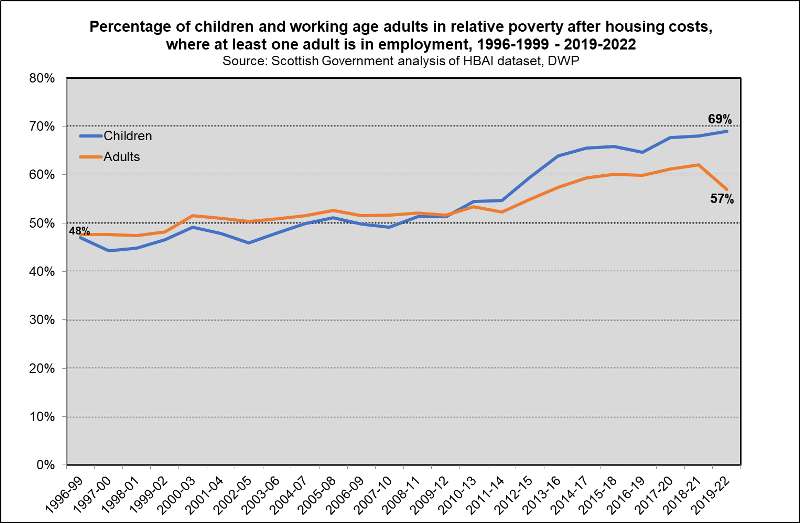In-work poverty
In-work poverty after housing costs
In-work poverty measures the number of people in poverty within households where at least one person is in employment as a proportion of all those living in poverty. The graph above shows the percentage of individuals affected by in-work poverty after housing costs (AHC) among working age adults in poverty and among children in poverty. Both sets of data refer to Scotland as a whole.
In the latest three-year estimate shown, 2019-22, in-work poverty AHC increased for children to 69%. In-work poverty decreased for working-age adults, to 57%. This was driven by an increase in the overall number of people in poverty, and particularly a rise in workless households in poverty. This means that the drop was in the proportion, rather than the amount, of working-age people suffering in-work poverty.
There had been a gradual rise over the last 21 years in the proportions of working age adults and children in working households affected by poverty, which had steepened since around 2010-13. This trend continued for children, but changed for working-age adults.
Notes
‘In-work poverty’ refers to those individuals living in households where at least one member of the household is working (either full or part-time) but where the household income is below the relative poverty threshold (<60% of the median UK income in the same year). This measure is calculated on income before housing costs and after housing costs, but on this page we only show the figures after housing costs.
The figures above refer to Scotland rather than Glasgow as estimates below Scottish level are not available.
These data are Scottish Government calculations. More detail on in-work poverty in Scotland can be found in the Scottish Government document What do we know about in-work poverty in Scotland?
These data come from Scottish Government statistics. They were updated in March 2023. They will be updated again in 2024 when new data become available.

